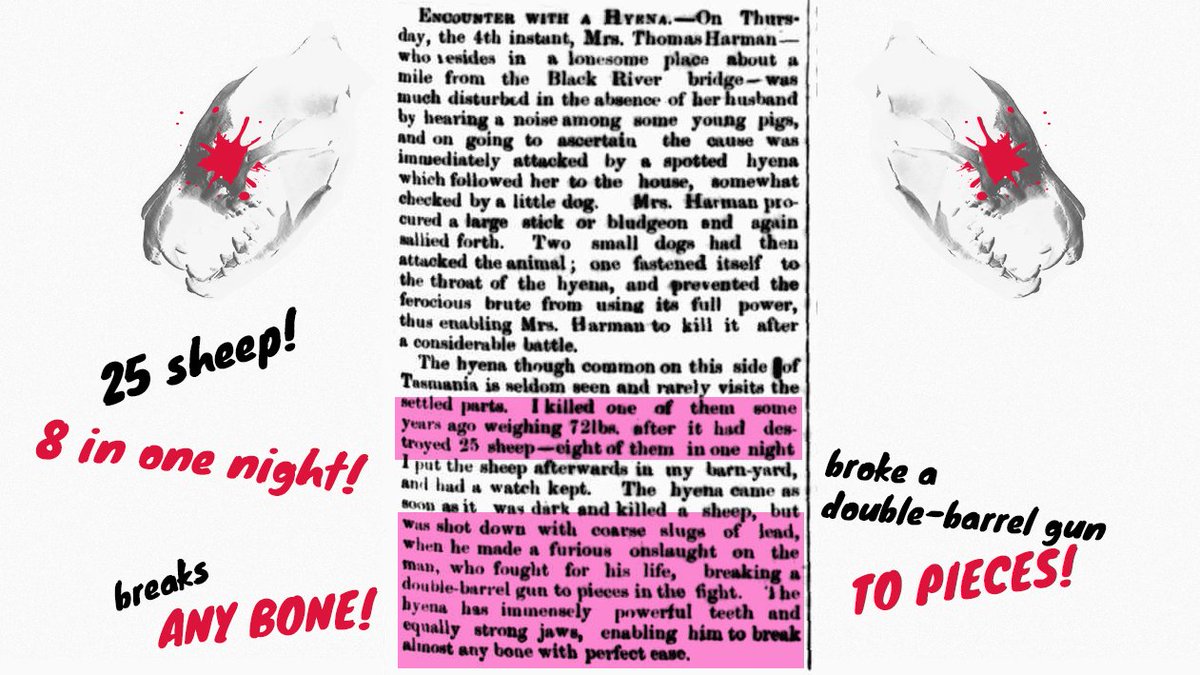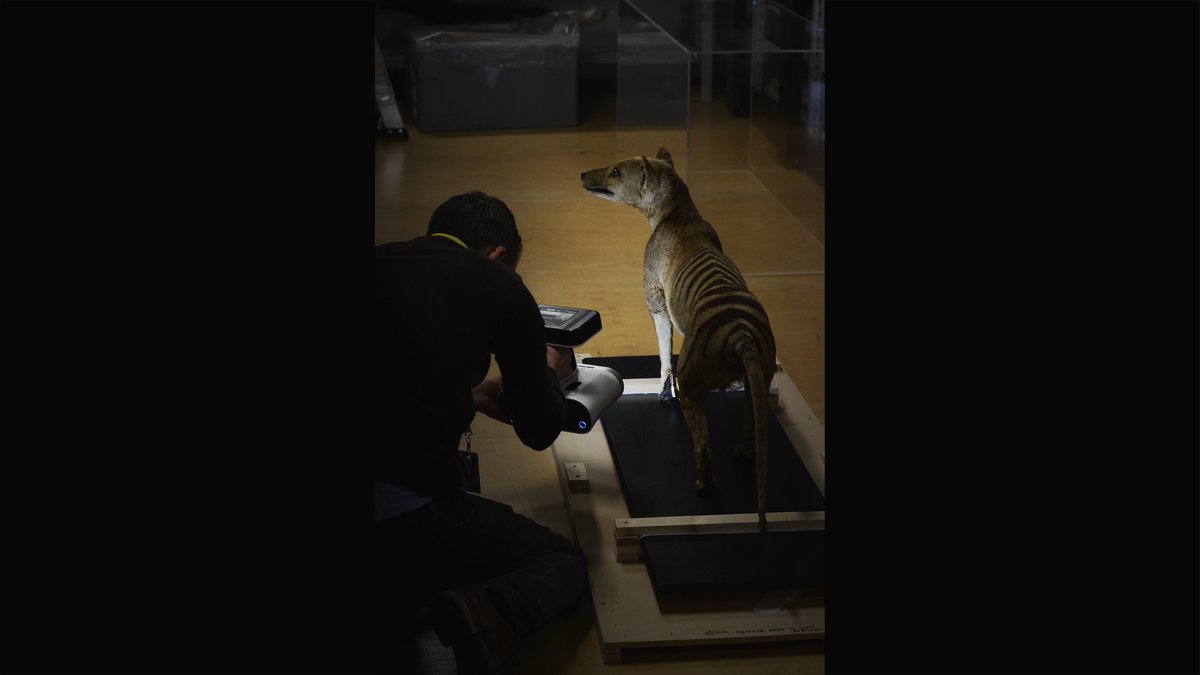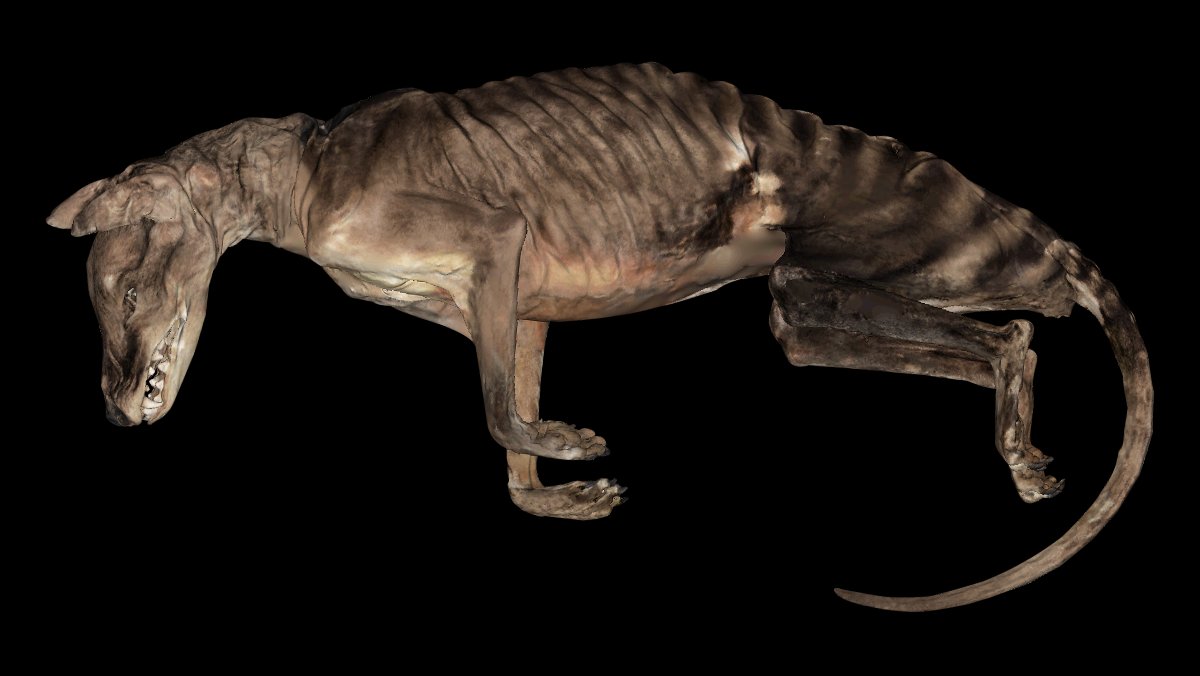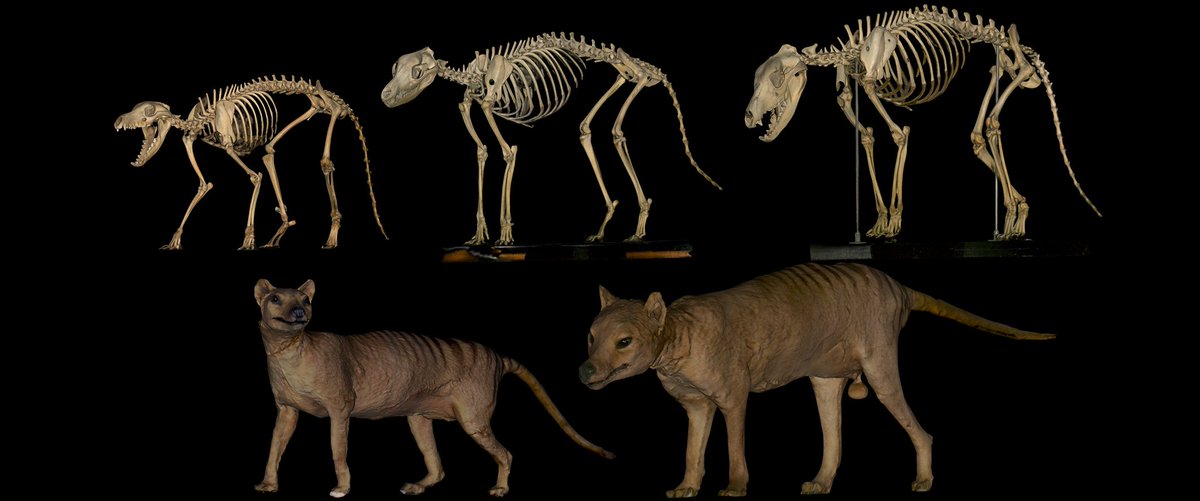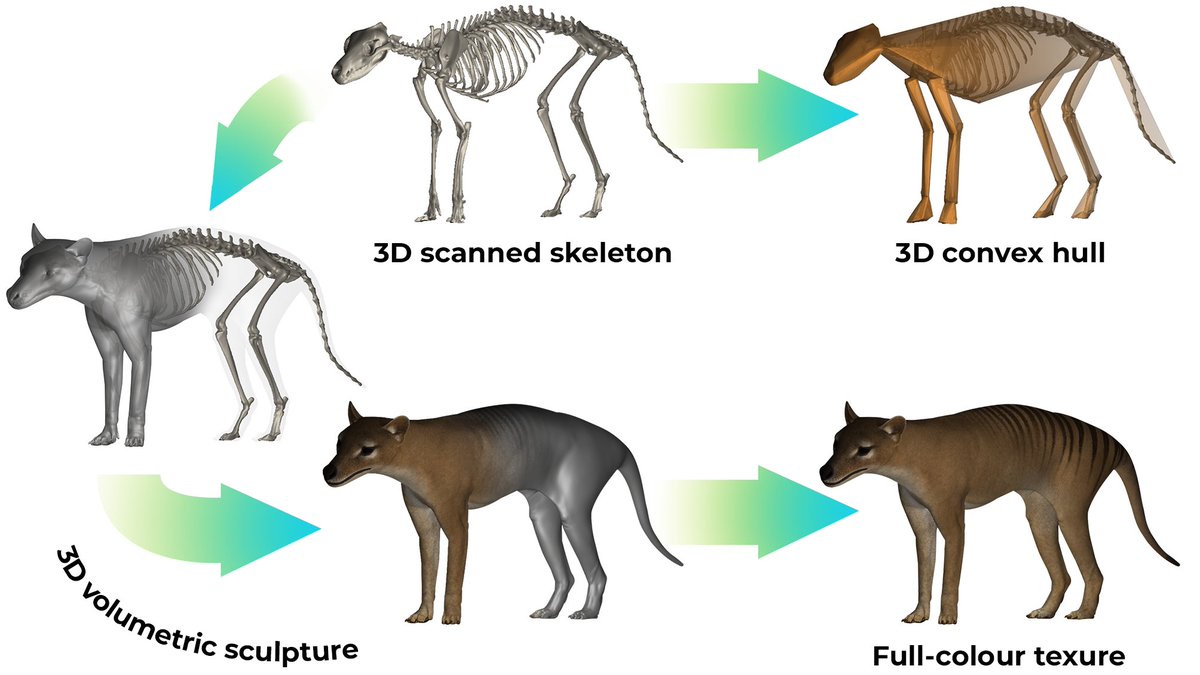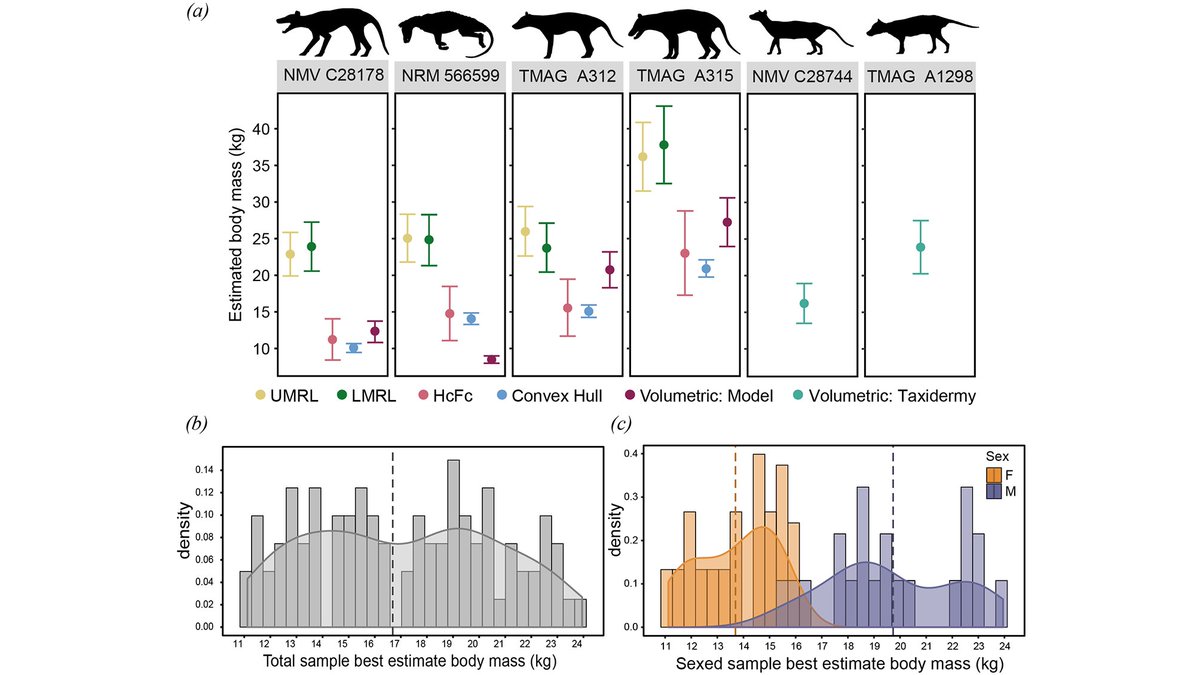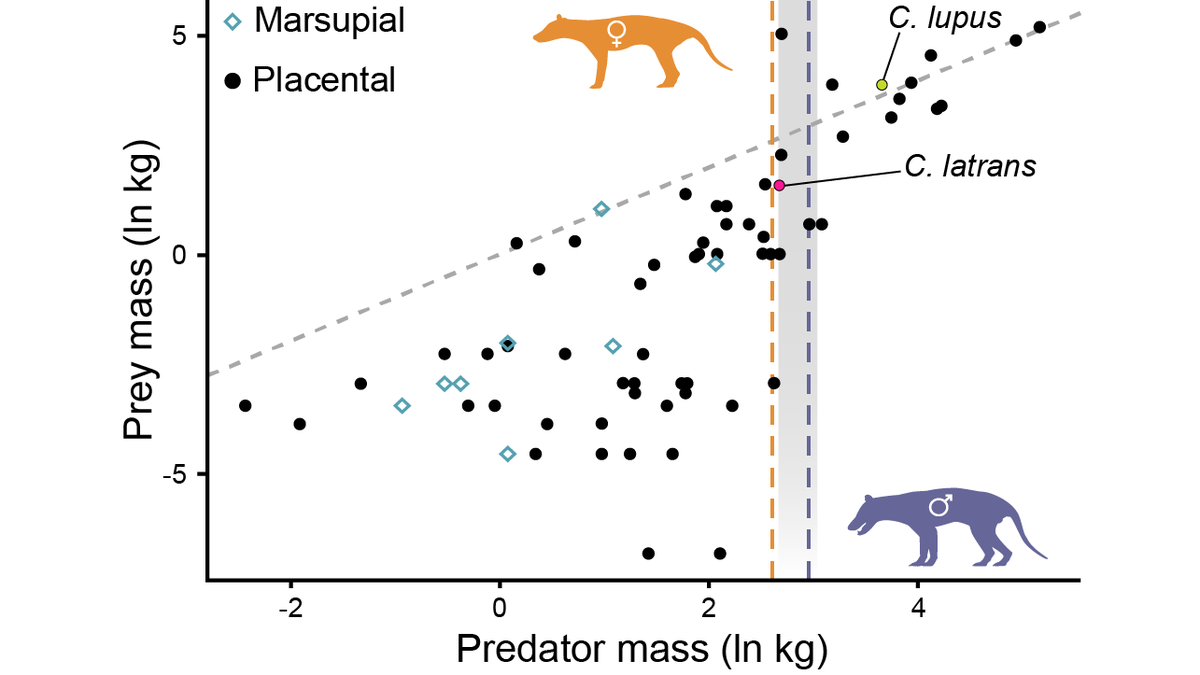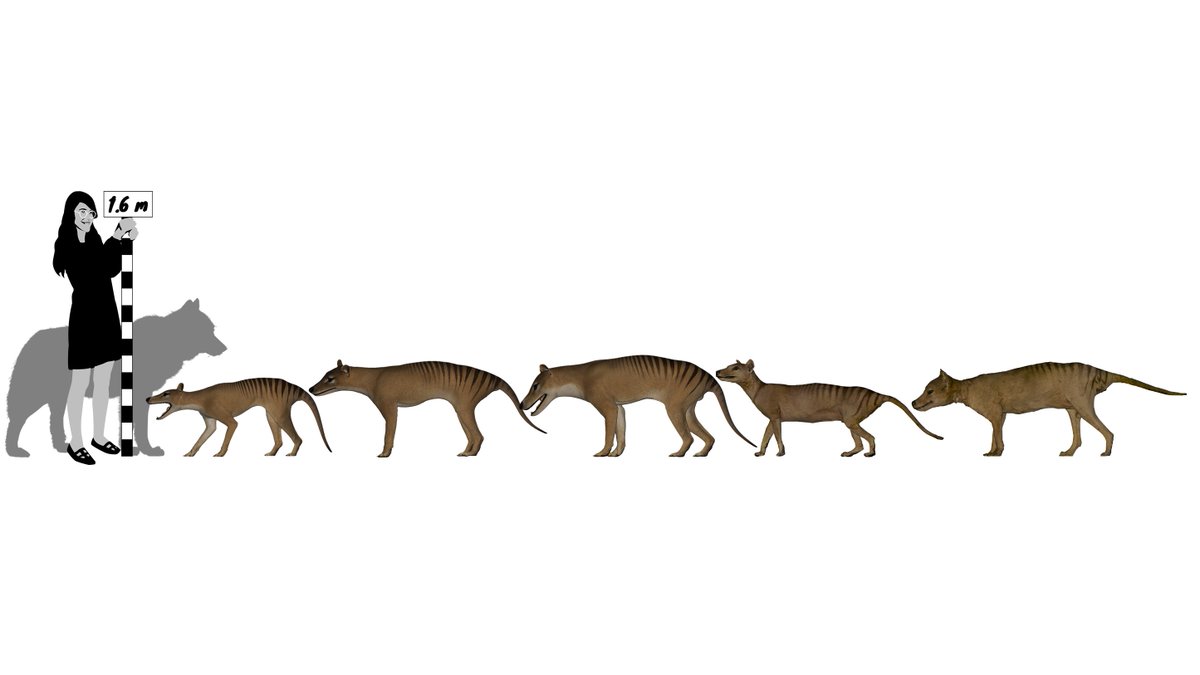My second PhD paper is out: https://royalsocietypublishing.org/doi/10.1098/rspb.2020.1537 @royalsociety
In it we reveal that the thylacine, the famous extinct Australian icon, was only about half as big as once thought - not a "Big bad wolf" after all! 1/13
In it we reveal that the thylacine, the famous extinct Australian icon, was only about half as big as once thought - not a "Big bad wolf" after all! 1/13
This all started way back in 2016 when I saw my first thylacine. You see, the common weight estimate is 29.5 kg, the size of a small wolf.
I opened up a box and saw my first thylacine skull, and immediately said "That's not a 30 kg animal!" 2/13
I opened up a box and saw my first thylacine skull, and immediately said "That's not a 30 kg animal!" 2/13
Looking at the source material for the 29.5 kg weight, I found that it was based on a handful of 19th Century newspaper articles.
That's fine by itself, but reading the accounts started to feel like reading tall tales... 3/13
That's fine by itself, but reading the accounts started to feel like reading tall tales... 3/13
But how could we weigh an extinct animal?
Palaeontologists have been working on this problem for over a hundred years.
And, it turns out that some of the first methods tried - volumetric ones - might be the trick! 4/13
Palaeontologists have been working on this problem for over a hundred years.
And, it turns out that some of the first methods tried - volumetric ones - might be the trick! 4/13
I enlisted the help of Ben Myers from @Thinglab & we visited @museumsvictoria & @tmasmuseum.
There Ben used the amazing new @Artec3DScanners Leo 3D surface scanner to scan whole mounted skeletons & taxidermies! 5/13
There Ben used the amazing new @Artec3DScanners Leo 3D surface scanner to scan whole mounted skeletons & taxidermies! 5/13
My supervisors JW Adams and @DrTeethAl also managed to get access to the only whole body preserved thylacine in the world, at the wonderful @naturhistoriska. This beautiful, sad girl was scanned as well with our lab's @Artec3DScanners Space Spider 6/13
These priceless specimens could now be taken into the computer and digitally weighed!
Here are the @museumsvictoria & @tmasmuseum specimens scanned by Ben @Thinglab, very approximately to scale. 7/13
Here are the @museumsvictoria & @tmasmuseum specimens scanned by Ben @Thinglab, very approximately to scale. 7/13
One last hurdle had to be cleared - how do you weigh a skeleton? By enlisting an amazing digital artist, that's how!
The incredible @DamirGMartin took the scans of the skeletons and digitally sculpted thylacines around them.
https://www.artstation.com/damirgmartin 8/13
The incredible @DamirGMartin took the scans of the skeletons and digitally sculpted thylacines around them.
https://www.artstation.com/damirgmartin 8/13
So, with these scans, we were able to digitally build and weigh the thylacines, based on the volume of their bodies, by building convex hulls around the skeletons, and then sculpting thylacines around the skeletons. 9/13
We compared those weights with the usual method of tooth-size equation estimates, & with equations based on the size of their limbs.
The limb-based equations ended up matching our model weights - good! 10/13
The limb-based equations ended up matching our model weights - good! 10/13
But the tooth equations were higher than all the other estimates! Not surprising; those already assumed it would weigh ~30 kg on average!
We were able to take our estimates and build a new set of equations to weigh incomplete thylacine specimens - a total of 93 thylacines! 11/13
We were able to take our estimates and build a new set of equations to weigh incomplete thylacine specimens - a total of 93 thylacines! 11/13
We found that the average thylacine was about 16.7 kg. - much smaller than a gray wolf. This is important ecologically, since predators smaller than an average of 21 kg almost always hunt animals less than half their size. 12/13
The thylacine probably would have looked at anything under about 8-10 kg as potential food - and would have thought twice about things bigger than that. This helps us build a better picture of the thylacine, their ecology, and the ecosystem they lived in! 13/13

 Read on Twitter
Read on Twitter
